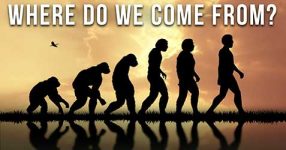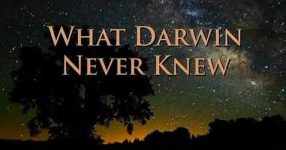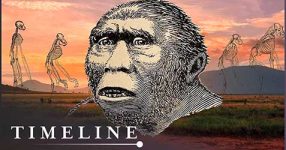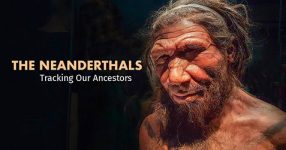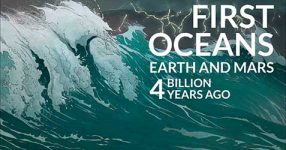“Great Moments in Evolution – The Miracle of Life” unfolds the awe-inspiring journey of evolution, starting with a barren planet transforming into the Earth we know today. Approximately four billion years ago, life began its journey, gradually spreading across every corner of the planet. Charles Darwin, an Englishman, played a pivotal role in revolutionizing our understanding of life, highlighting the interconnectedness of all species. The narrative delves into fundamental questions about intelligence, sleep, and the distinction between humans and animals.
As the documentary progresses, it vividly depicts the early challenges Earth posed for life. The planet’s surface, once a hot and hostile environment, gradually transformed through rainfall, forming a colossal primeval ocean. Amidst volcanic activity, black smokers and white smokers played crucial roles in facilitating the development of life’s essential molecules – amino acids, sugars, bases, and fats. These components engaged in a mesmerizing dance, ultimately giving rise to RNA.
The Epic Journey of Evolution through Geological Time
The epic journey of evolution unfolds on a geological timescale, compressing Earth’s history into a single year. LUCA (Last Universal Common Ancestor) emerges in early February, while single-cell organisms populate the ocean until November. Life explodes in the Cambrian Era on November 20th, and the lineage of man and chimpanzee splits on December 29th. Finally, Homo sapiens makes their entrance on December 31st, just moments before midnight. The narrative explores the dedication of Jane Goodall, who tirelessly worked to gain the trust of chimpanzees, shedding light on the evolutionary kinship between humans and these primates.
The documentary further illuminates Charles Darwin’s groundbreaking concepts and the resistance he faced in publishing them. It introduces the intriguing case of zebras, explaining how their distinctive black-and-white stripes evolved as a defense mechanism against deadly tsetse flies. Through various examples, the film showcases how evolution adapts living beings to the challenges of their environments, leading to the emergence of diverse species like the mimic octopus and the nautilus.
Evolution’s Wonders and Challenges
The documentary dives into the complex evolution of eyes, exploring Darwin’s initial considerations and the intricate stages leading to the development of sophisticated eyes in different species. From the predatory Anomalocaris with complex eyes to the intelligence displayed by dinosaurs, especially Troodons, the film unveils the multifaceted nature of evolution.
As the focus shifts to the success of the human species, researchers at the Max Planck Institute of Evolutionary Anthropology in Leipzig analyze the role of cooperation in human evolution. The documentary emphasizes that physical prowess alone does not explain humanity’s success; instead, it is the ability to collaborate that has propelled our species forward. Evolutionary biologist Richard Dawkins sheds light on the distinctive features that set humans apart, such as language, culture, and technological advancements.
Communication Across Species and the Intricacies of Intelligence
The film explores communication among different species, from the underwater world of fish to the intricate vocalizations of birds. It delves into the sophisticated communication methods of prairie dogs and the learning processes essential for survival. The border between mankind and animals becomes increasingly porous as evidence of intelligence and problem-solving abilities emerges, exemplified by the clever experiments involving birds like Kermit.
“Great Moments in Evolution – The Miracle of Life” concludes by addressing the question of intelligence and the brain. It compares brain sizes among various species, emphasizing that the large brains of humans, relative to body weight, have contributed to our unique abilities. The journey through evolution, from Tiktaalik’s first steps on land to the intricate development of embryos, underscores the continuous and dynamic nature of life. The documentary leaves viewers with the profound realization that evolution is an ongoing process, ceaselessly shaping the diverse and fascinating life forms that inhabit our planet.

